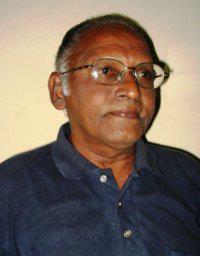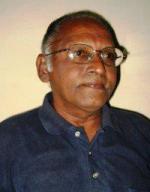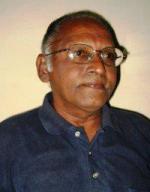A vital element of the Torah portion Naso (or Nasso), found in the Book of Numbers in the Hebrew Bible (Tanakh), concerns a treatise of the Talmud. It explains the ordeal of the bitter water, an ancient Israelite religious practice—a trial by ordeal to determine the guilt or innocence of a woman suspected of adultery by subjecting her to a painful, or at least an unpleasant and usually dangerous, trial.

If a Jewish husband suspects the pregnancy of his wife was due to adultery and has no witnesses to launch a case of adultery, either against a male perpetrator who impregnated his wife or if she was a victim of rape, not impure of the guilt of adultery, or against both the wife and the perpetrator if she participated in it willingly, he could resort to the “ordeal of the bitter water.”
The woman undergoing this ritual was called a sotah (unfaithful wife or strayer). The “ordeal of the bitter water,” is a ritual that involves her drinking a concoction of water, a bit of dirt from under the marble floors of the temple, a bitter herb, and the rubbed-off dried ink of the text of the description of the sotah ritual, including the name of God.
Because the potion was regarded as impure it had to be mixed in an earthenware vessel necessitating its subsequent destruction (Numbers 5:17):
17 And the priest shall take holy water in an earthen vessel; and of the dust that is on the floor of the tabernacle the priest shall take, and put it into the water.
The woman is required by the biblical passage to have loosened hair, a symbol of the woman’s supposed shame, during the ritual (Numbers 5:18):
18 And the priest shall set the woman before the LORD, and let the hair of the woman’s head go loose, …
A kohen (Jewish priest) in a duly established temple court administered the “ordeal of the bitter water” (Numbers 5:19–24):
And the priest shall cause her to swear, and shall say unto the woman: ‘If no man has lain with thee, and if thou hast not gone aside to uncleanness, being under thy husband, be thou free from this water of bitterness that causeth the curse; but if thou hast gone aside, being under thy husband, and if thou be defiled, and some man have lain with thee besides thy husband–then the priest shall cause the woman to swear with the oath of cursing, and the priest shall say unto the woman–the LORD make thee a curse and an oath among thy people, when the LORD doth make thy thigh to fall away, and thy belly to swell; and this water that causeth the curse shall go into thy bowels, and make thy belly to swell, and thy thigh to fall away’; and the woman shall say: ‘Amen, Amen.’ And the priest shall write these curses in a scroll, and he shall blot them out into the water of bitterness. And he shall make the woman drink the water of bitterness that causeth the curse, and the water that causeth the curse shall enter her and become bitter.
If the woman was unharmed by the bitter water, the rules regard her as innocent of the accusation.
In cases of guilt, the text does not specify the amount of time needed for the potion to take effect. Maimonides, a Sephardic Jewish philosopher who became one of the most prolific and influential Torah scholars of the Middle Ages records the traditional rabbinical view: “Her belly swells first and then her thigh ruptures and she dies”. The word “thigh” is often used in the Bible as a euphemism for various reproductive organs, in this case, it may mean the uterus, the placenta, or an embryo, with the implicit threat of death resulting from possible childbirth complications or most likely refers to a uterine prolapse, a form of pelvic organ prolapse in which the uterus and a portion of the upper vagina protrude into the vaginal canal and, in severe cases, through the opening of the vagina.
The bitter water could be an abortifacient, inducing an abortion or miscarriage if the woman is pregnant with a child which her husband alleges is not his but that of another man. If the fetus aborts as a result of the ordeal, this presumably confirms the woman’s guilt of adultery, and if the fetus does not abort her innocence is presumed.
According to the Talmud, if the woman is guilty, she and the man with whom she sinned will suffer a terrible death, and if the woman has done a great deal in fostering the study of Torah, she may not die immediately but only show symptoms at the time of an illness that will eventually take her life. But if she is innocent, she won’t just escape harm but will also be blessed with children if she is childless and with healthy ones if previous ones were sickly.
According to Mishnah (“study by repetition”), the ordeal of the bitter water was abolished sometime during the first century CE under the leadership of Yohanan ben Zakkai, an important Jewish sage during the late Second Temple period and in the transformative post-destruction era. He stated: When adulterers became many, the ordeal of the bitter water stopped, for the ordeal of the bitter water is performed only in a case of doubt. But now many see their lovers in public.
Explanations in rabbinical literature vary concerning the cessation of the practice. If the ordeal of the bitter water had not been abolished, then according to Jewish law, the ritual would have ceased with the fall of the Temple (in approximately the year 70 CE), as it should not have been performed elsewhere.
If the errant wife chose to dissolve her marriage and forfeit the financial support promised her, the husband had to grant her a divorce, and she suffered no other penalty.
The ordeal of the bitter water was not intended to punish the woman if she was guilty but to absolve her if she was innocent.
Related Articles
- Sotah (Talmud) (https://en.wikipedia.org)
- Ordeal of the bitter water (https://en.wikipedia.org)
- Understanding the Sotah Ritual (https://www.myjewishlearning.com)
- NASO: The Ordeal of the “Bitter Waters” (https://www.chabad.org)
- Naso (parashah) (https://en.wikipedia.org)
- Maimonides (https://en.wikipedia.org)
- Oral Torah (https://en.wikipedia.org)


























